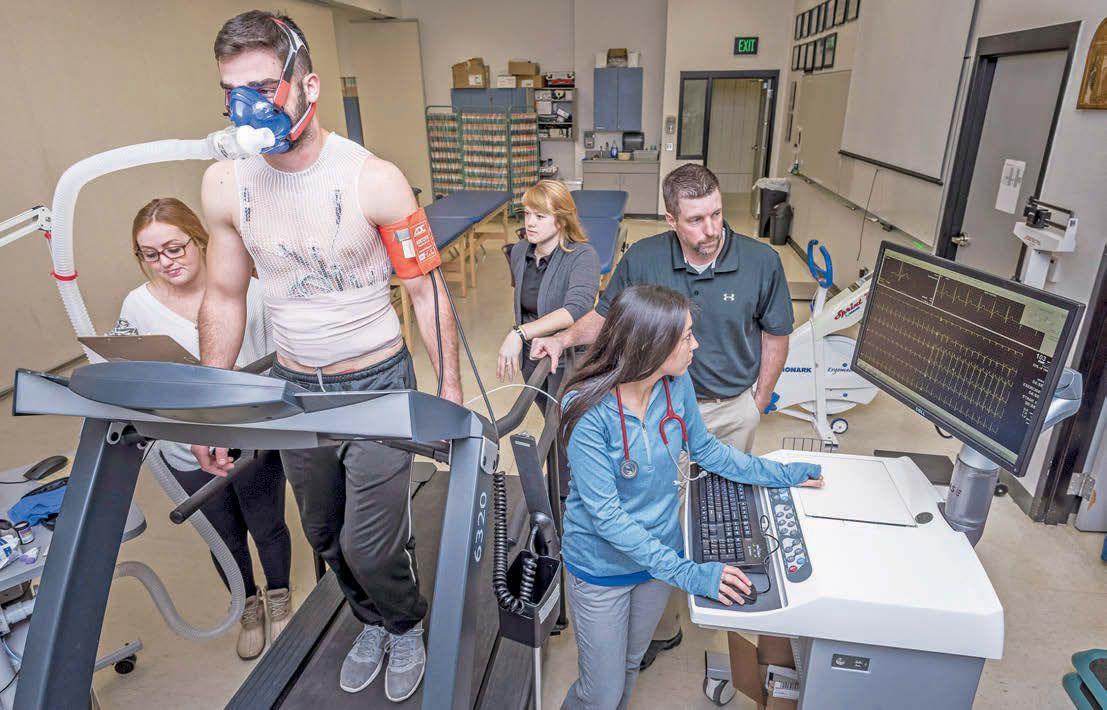
3 minute read
The liberal arts are important to the ever changing workforce, leaders say
By Sydney Mook
While the future of work is changing before the world’s eyes and the demand for technical degrees increases with the looming presence of automation, the region’s universities say the workplace of the future will require three key skills: the ability to read, write and communicate.
A recent study from thinktank giant McKinsey relays the potential effects automation could have on America’s workforce in the years to come. The study estimates that approximately 40 percent of U.S. jobs are in categories that are expected to shrink between now and 2030. The report states that by 2030 a majority of job growth may be concentrated in 25 “megacities” and their suburbs. Other areas of the country, especially rural areas, will likely see fewer jobs being created and may even lose jobs.
North Dakota, and the region as a whole, is at an important crossroads as the state prepares for the automation era to begin. The only way to thrive during that time will be to work together, says North Dakota University System Chancellor Mark Hagerott.
Hagerott said the State Board of Higher Education’s research committee is already a good step forward for the system and the state, as research and finding new ways to fulfill the state’s workforce needs will be of the highest priority.
“The future will be built on universities’ research and workforce adaptation,” Hagerott said.
Reaching rural populations will also be important, Hagerott said. Programs like the Center for Rural Health and universities’ online programs, both of which have liberal arts focuses, will be “critically important” to reach the rural areas and help them succeed in the future.
“(The liberal arts) are absolutely imperative in a very practical way,” Hagerott said, adding that from meeting with business executives across North Dakota, employers say they need people who can read and write and meet with customers to discuss company matters.
But the liberal arts are needed in other ways, too, Hagerott said.
“The liberal arts are crucial in interpreting what is going on in this digital world,” he said, noting there will always be a need for lawyers and legislators who can help people understand what is going on in the world around them. Those people will also help the world determine the ethics around what is happening in the digital era and when technology has gone too far.
But no matter what the workplace looks like in 2030 and beyond, employers have been telling colleges that they need people with a liberal arts degree to be able to relay their ideas in the future.
Liberal arts degrees have been a part of universities’ identities and cores for hundreds of years, but for many schools, like the University of Mary in Bismarck, N.D., and Concordia College in Moorhead, Minn., those degrees have changed over time.
While Concordia has a foundation in the liberal arts, Vice President for Enrollment and Marketing Karl Stumo said the college also has a “firm commitment” to education in the practical.
“Concordia has always balanced a liberal arts education with training in areas like education and business. We’ve had a long tradition with our nursing program,” he said. “There’s really a balance.”
Stumo said there aren’t many purely liberal arts colleges left in the United States. Most schools have a mix of liberal arts degrees and practical degrees for students to obtain. At Concordia about one-third to 40 percent of a student’s education is based on the core liberal arts curriculum.
Depending on the major or majors a student chooses, they may take more liberal arts classes.
“There’s a deep commitment on the part of the faculty and administration at Concordia that a well-educated student is one that’s not only prepared for their first job or career, but prepared for a life of work in their career, in leadership in their community, in solving problems that don’t have easy answers,” Stumo said. “That’s a liberally educated person.”
The University of Mary has a heritage that goes back 1,500 years to St. Benedict, when higher education found its roots back in medieval Europe, Vice President for Public Affairs Jerome Richter said.
“The whole person is the focus of a good education,” he said. “From the very start of the University of Mary, (the sisters) knew that the liberal arts were always going to be important. They were always going to be kind of, if you will, the core of our education. But at the same time, being the whole person, the sisters being practical, they said, ‘yes, you have got to have a good liberal arts education. And you also have to be a professional.’ ”
Diane Fladeland, vice president for academic affairs at the University of Mary, said a liberal arts education is the foundation that “can be applied to any profession that is essential for every profession.”
“The ability to speak and write well, really has only become more important. And now we add to that: How do we communicate electronically and digitally?” Fladeland said. “Understanding continued on page 20










